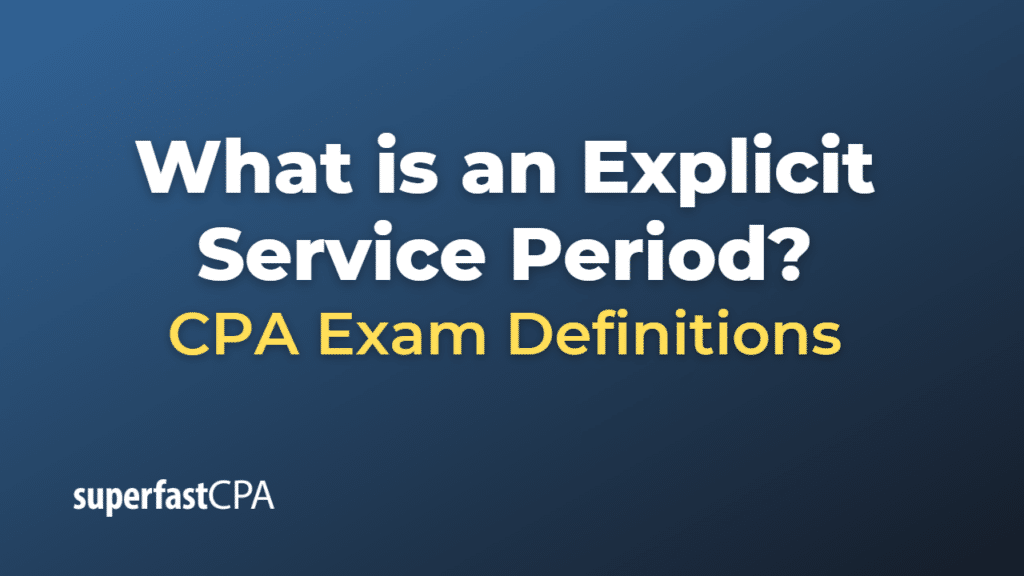Explicit Service Period
An explicit service period generally refers to a specific, predetermined duration of time during which a person is expected to render services to an organization or a company. It’s often detailed in employment contracts or service agreements. The individual is typically entitled to payment or compensation for the duration of this service period.
For example, a software developer might have a one-year explicit service period with a company. During this time, they’re expected to work on designated projects, and they’ll receive a specified salary or wage in return. After the service period ends, the contract might end, or it could be renewed, depending on the terms.
In some cases, the term “explicit service period” is used in the context of financial accounting, particularly in the valuation and amortization of intangible assets or understanding stock options’ vesting schedules.
Example of an Explicit Service Period
Consider a company named BlueChip Corp. that has a policy of granting stock options to its employees. When an employee named Mark is hired, he is granted 1,000 stock options as part of his compensation package. However, these stock options come with a vesting schedule of four years, which is the explicit service period.
This means that Mark needs to stay with the company for four years to fully earn (or “vest”) all 1,000 of his stock options. Typically, vesting might occur gradually over the four-year period, often on an annual basis. So, after one year of service, Mark would vest 25% of his options, or 250 options. After two years, he would vest another 250, and so on. After four years, he would be fully vested and could exercise all 1,000 of his options.
From an accounting perspective, BlueChip Corp. would recognize the cost of these stock options over the explicit service period. If the fair value of the options at the grant date is estimated to be $20 each, the total cost for the company would be $20,000 (1,000 options x $20). This cost would be spread out over the four-year service period, meaning the company would recognize an expense of $5,000 each year ($20,000 / 4 years).
This way, the accounting for the stock options aligns with the period over which the company receives service from Mark, the employee.













